Cars have designated lights to help you communicate with other drivers while you’re on the road or when driving. There are times though when the bulbs get busted, the electrical wirings have problems, or an issue occurs unexpectedly, preventing you to use the lights.
So what are you going to do if this happens on the road? Would you just leave your car on the side of the road until help arrives? What if you are a few kilometers away from a nearby professional or shop? Should you consider commuting and leaving your car? Should you have your car towed? You can, but you don’t have to.
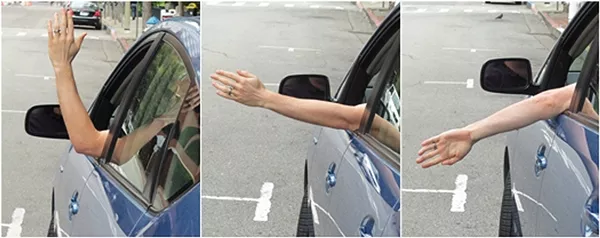
There are hand signals you should use to be safe on road
Driving with busted or problematic lights can also be an option but is dangerous. As such, you should learn and use fundamental driver hand signals. These signals have been used for years in situations similar to those mentioned above. Cyclists, motorcycle drivers, pedicab drivers, and tricycle drivers also use these signals.
Thus, being familiar with these hand signals will not only save you from the dangers and hassles of driving without or damaged lights but will also help you understand what other motorists and/or cyclists are trying to tell you. There are four hand signals drivers in the Philippines can use.
Some countries also utilize these signals, but make sure you do your research first prior to using them in a different country. With that being said, the following are the information you are trying to tell the other drivers plus the hand signal you should use provided by Philkotse.com.
1. Stopping or slowing down
When hitting the brake or slowing down, what you need to do is extend your arm out, hang it down by creating a 90-degree angle. Your fingers should be pointing down, palm facing your car’s rear, and your elbow should be bent or form an inverted L with your arms.
Before you hit your brakes, take some time to check your rear and side mirrors to ensure that the vehicles behind are slowing down, which is an indication that they’ve seen your signal.
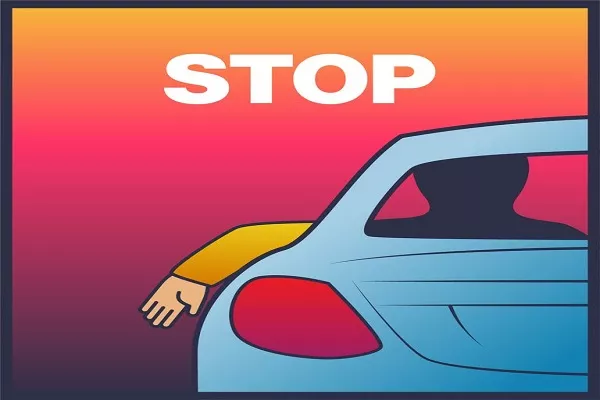
Stopping or slowing down hand signal
>>> More things to know: The importance of abiding traffic lights and road signs.
2. Admission to pass
At times, motorists behind you would want to go ahead. In order to give them permission to do so, again, extend your left arm out of the window. Create a 90-degree angle but this time, your hand should be pointing up. The elbow should also be slightly bent. Then, in a steady, counter-clockwise motion, gently move your arm.
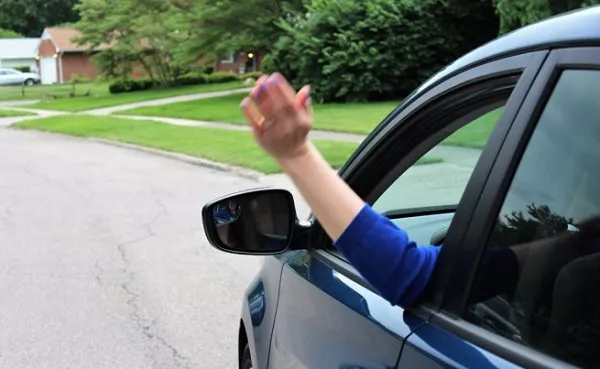
Hand signal to allow another motorist to pass
3. Turning or moving to the left
If you will be turning left or moving to the left corner of the road in a few seconds or so, extend your arm out at a 180-degree angle. Make sure your palm is facing forward and your elbow is straight. Your fingers can be spread out or you can fold your four fingers to make a pointing sign towards the left.
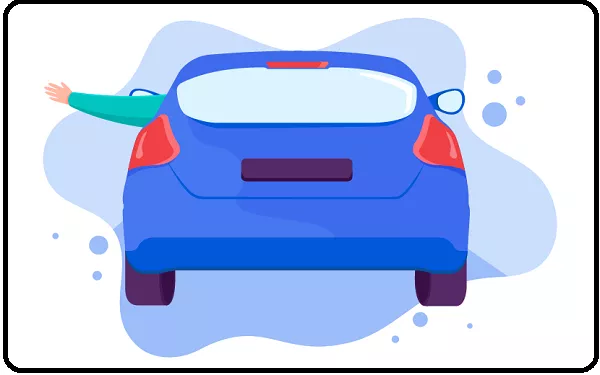
Left turn hand signal
>>> Have you known about 20+ weird driving laws around the world?
4. Turning or moving to the right
If you are heading to the right side of the road or turning to that direction, again, bring your left hand out of the window. Then, create a 90-degree angle, the elbow bent with the palm facing the front of your car. This is similar to the admission to pass hand signal but without waving gesture.
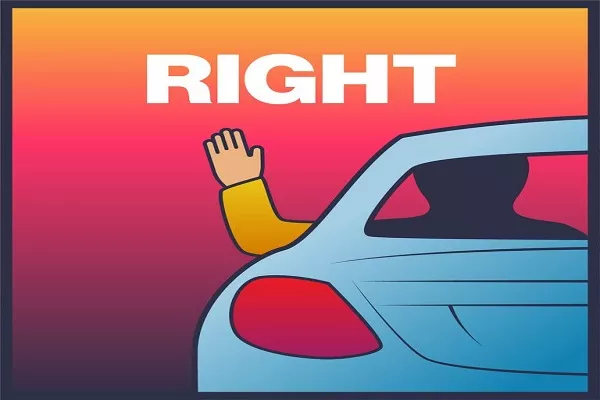
Right turn hand signal
Some drivers would prefer to use the same signal but with one finger pointing to the right direction. This is also acceptable
Things to keep in mind
Before we talk about and teach you the four basic driving hand signs you can use to communicate with other motorists, here are some of the things you need to remember:
- Keep the left window open: As obvious as it may sound, the driver’s window should be kept widely open since, for all the signals, you would be extending your arm outside. That is for the other motorists to see your hand signals clearly.
- Follow proper distance: When using a hand signal of drivers, even if you are a cyclist, you must make sure that you give the signal at least 100 feet away before you make the move. This way, you can give those at your back or sides enough time to see your signal.
- Maintain the hand signals for a long time: Car signal lights automatically go off once you’re done turning or stepping on the brake. As such, when you use hand signals, make sure that you maintain the hand signal until you’re done with what you need to do. This way, those at your back knows when they need to proceed or overtake.
- Use hand signals anytime: This does not mean that you should use hand signals throughout your driving period.
>>> You might want to know:
- A drivers' guide to the traffic signal lights in the Philippines.
- A complete guide to avoid pedestrian accidents.
In-road communication even without your lights
Your vehicle and motorcycle might have busted lights or your bicycle and pedicab might not be equipped with lights, but with the knowledge and proper use of basic driver hand signals, you can communicate with other motorists.
Just remember to provide the signal earlier and remove the signal once you are done with turning or stopping. Although this might not be usable at night time, it will give you enough time to get to a shop or professional to have your lights fixed before it gets dark.
Recent posts
- Overtaking rules in the Philippines every driver must know Sep 07, 2019
- 7 must-know tips for every Pinoy driver to avoid car accidents Jan 29, 2019
- Top 5 causes of road accidents in the Philippines Oct 06, 2021
- On being alert: 5 Essential Tips to Avoid Car Accidents Oct 31, 2018
- 4 rules to avoid car accidents when parking May 15, 2017












